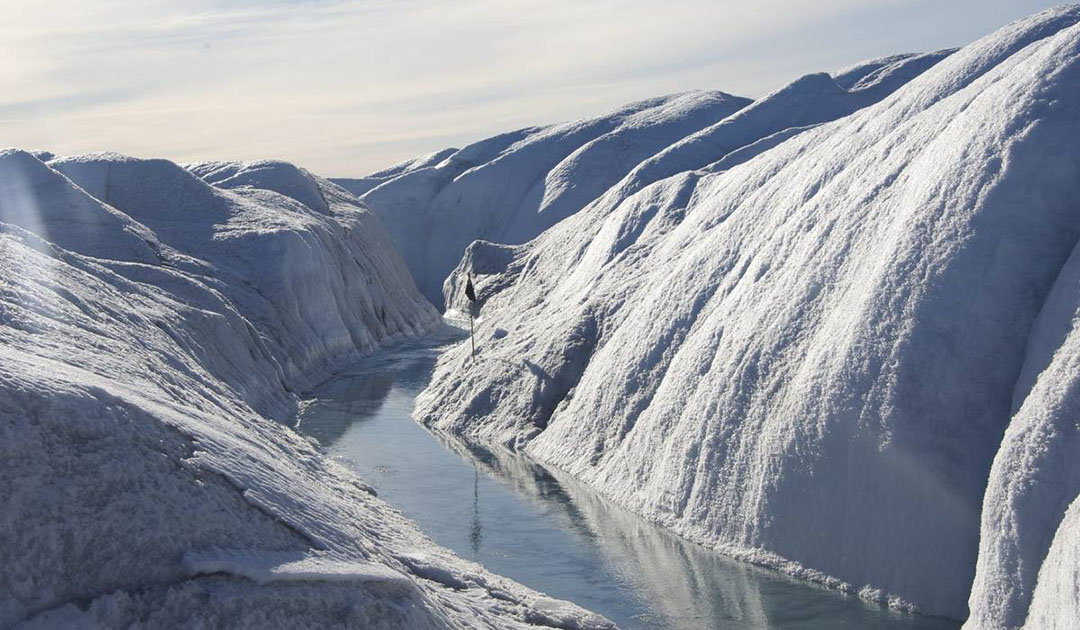
Rising temperatures are melting Greenland’s ice and glaciers, causing sea levels to rise. How fast and how much is yet uncertain. To provide insight on this issue, researchers at the Alfred Wegener Institute have modeled the development of the ice sheet from the past to the future. They published their results in the current issue of the journal Public Library of Science (PLoS) ONE.
With the help of the Parallel Ice Sheet Model (PISM), the scientists were able to map the waxing and waning of the Greenland Ice Sheet over the last 125,000 years: It reached its maximum around 18,000 to 17,000 BP (before present, refers to 1950) and its minimum around 6,000 to 5,000 BP. “We found that the times when the ice sheet was largest, and smallest, respectively, lag the times when Greenland’s climate was coldest and warmest by several thousand years,” says Dr. Hu Yang, lead author of the study from the Alfred Wegener Institute, Helmholtz Centre for Polar and Marine Research. During the Holocene (last 10,000 years), a period usually considered to be stable, Greenland experienced a gradual summer cooling, primarily due to the time shift of Earth’s perihelion from Northern Hemisphere summer to winter. This summer cooling drives a progressive growth of the Greenland ice sheet, from its minimum extent at 6,000 to 5,000 BP until the Industrial Age.

The simulations presented in the study also show that the natural growth of the ice sheet was reversed by human-induced warming only in the late 20th century, even though the air temperature has already risen globally and in Greenland for more than a century. The simulated results show good agreement with both the geological reconstruction of past evolution of the ice sheet, and recent satellite observations which indicate that the ice sheet only began to lose mass gradually from the 1980s onwards. “The evolution of the ice sheet in the past tells us that the response of ice volume to climate change is delayed by several millennia. Its evolution is not only controlled by present climate changes, but also influenced by past climate,” says Hu Yang. “Within this century, melting of the Greenland ice sheet could, in the worst case of warming, possibly increase the sea level by tens of centimeters. However, more significant sea level rise from melting could be irreversible and last for several millennia, even if we can stop or reverse the warming.”
“Normally, our society only cares about the sea level rise within this century. Due to the delayed response of ice sheet to climate change, catastrophic sea level rise will not likely to happen within our generations.” Prof. Gerrit Lohmann said. “However, what we do at this century will determine the destiny of ice sheet in the next hundreds or even thousands of years. Therefore, we would say that a responsible prediction of ice sheet should be extended for a longer period, on the timescale of millennia.”
Press release Alfred Wegener Institute for Polar and Marine Research
More on the subject:





